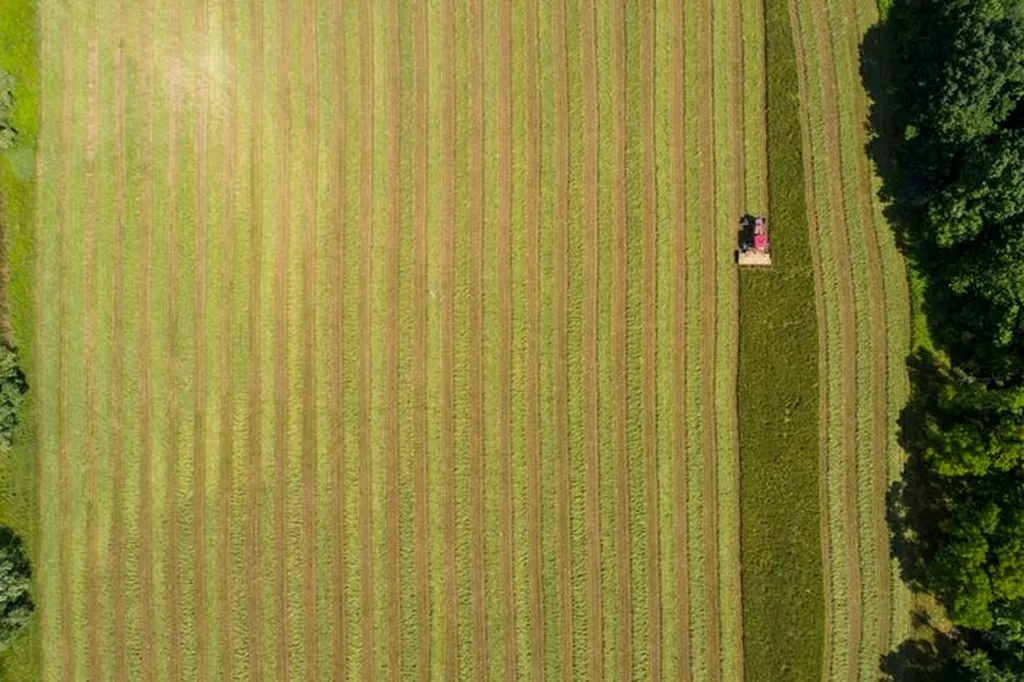In the ever-evolving landscape of precision agriculture, a groundbreaking study led by Jose Luis Pancorbo from the Consiglio Nazionale delle Ricerche–Institute of BioEconomy (CNR-IBE) in Italy, has harnessed the power of artificial intelligence and satellite imagery to revolutionize crop monitoring. The research, published in the IEEE Journal of Selected Topics in Applied Earth Observations and Remote Sensing, offers a promising approach to optimize nitrogen fertilization, a critical factor in ensuring food security and sustainable agriculture.
The study focuses on the dynamic monitoring of crop traits, particularly chlorophyll content (Cab) and leaf area index (LAI), which are crucial indicators of a crop’s nitrogen status. By integrating artificial neural networks with the PROSAIL model and Sentinel-2 satellite imagery, Pancorbo and his team have developed a hybrid approach that accurately estimates these key parameters. “Our method not only retrieves Cab and LAI with remarkable precision but also tracks their temporal fluctuations, providing a comprehensive overview of the crop’s nitrogen status throughout its growth stages,” Pancorbo explains.
The implications of this research are profound for the agricultural sector. Nitrogen is a vital nutrient for plant growth, and its efficient management is essential for maximizing crop yields while minimizing environmental impact. Traditional methods of nitrogen monitoring are often labor-intensive and time-consuming, making them impractical for large-scale farming operations. The hybrid approach proposed by Pancorbo and his team offers a scalable and efficient solution, enabling farmers to make data-driven decisions about fertilizer application.
The study’s accuracy in estimating Cab (with a root mean square error (RMSE) of 7.6 µg cm⁻²) and LAI (RMSE of 0.97 m² m⁻²) is a testament to the effectiveness of the proposed method. Moreover, the research demonstrates the potential to predict nitrogen nutrition index (RMSE of 0.13) and grain nitrogen output (RMSE of 17.34 kg N ha⁻¹), providing farmers with valuable insights into their crops’ health and productivity.
The commercial impacts of this research are significant. By optimizing nitrogen fertilization rates, farmers can reduce input costs and improve crop yields, ultimately enhancing their profitability. Additionally, precise nitrogen management contributes to environmental sustainability by minimizing nitrogen runoff and leaching, which can cause water pollution and contribute to greenhouse gas emissions.
Looking ahead, this research paves the way for further advancements in precision agriculture. The integration of artificial intelligence, radiative transfer modeling, and satellite imagery opens up new possibilities for monitoring and managing crop health. As Pancorbo notes, “This method allows for the timely identification of nitrogen-sufficient and nitrogen-stressed wheat plots, which is particularly evident starting 100 days after the sowing date.” This capability can be instrumental in developing targeted interventions to address nutrient deficiencies and ensure optimal crop growth.
In conclusion, the study led by Jose Luis Pancorbo represents a significant step forward in the field of precision agriculture. By leveraging cutting-edge technologies, the research offers a powerful tool for optimizing nitrogen management and enhancing crop productivity. As the agricultural sector continues to embrace digital innovation, such advancements will play a crucial role in shaping the future of sustainable and efficient farming practices. The research was published in the IEEE Journal of Selected Topics in Applied Earth Observations and Remote Sensing, which translates to the IEEE Journal of Selected Topics in Applied Earth Observations and Remote Sensing in English.

